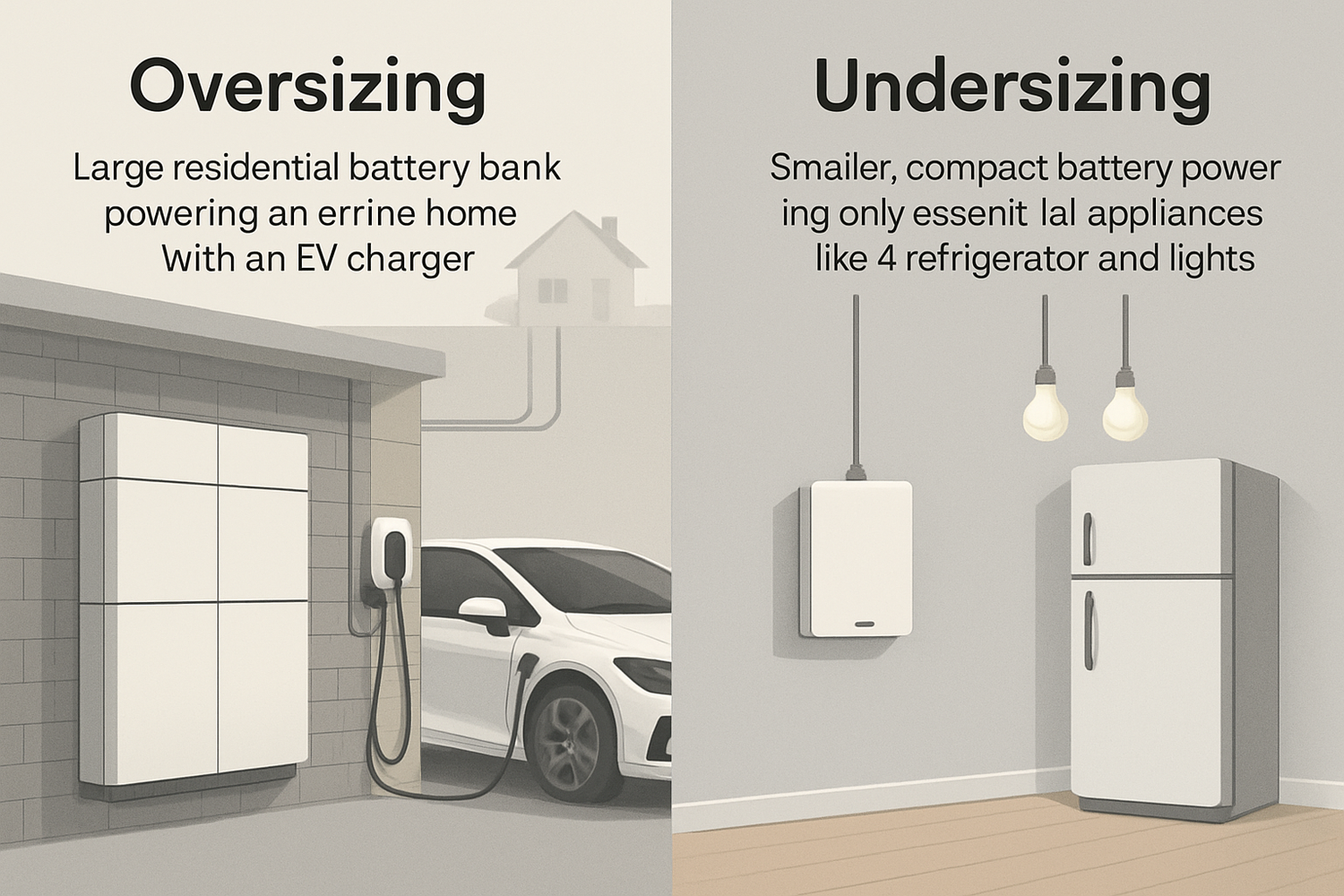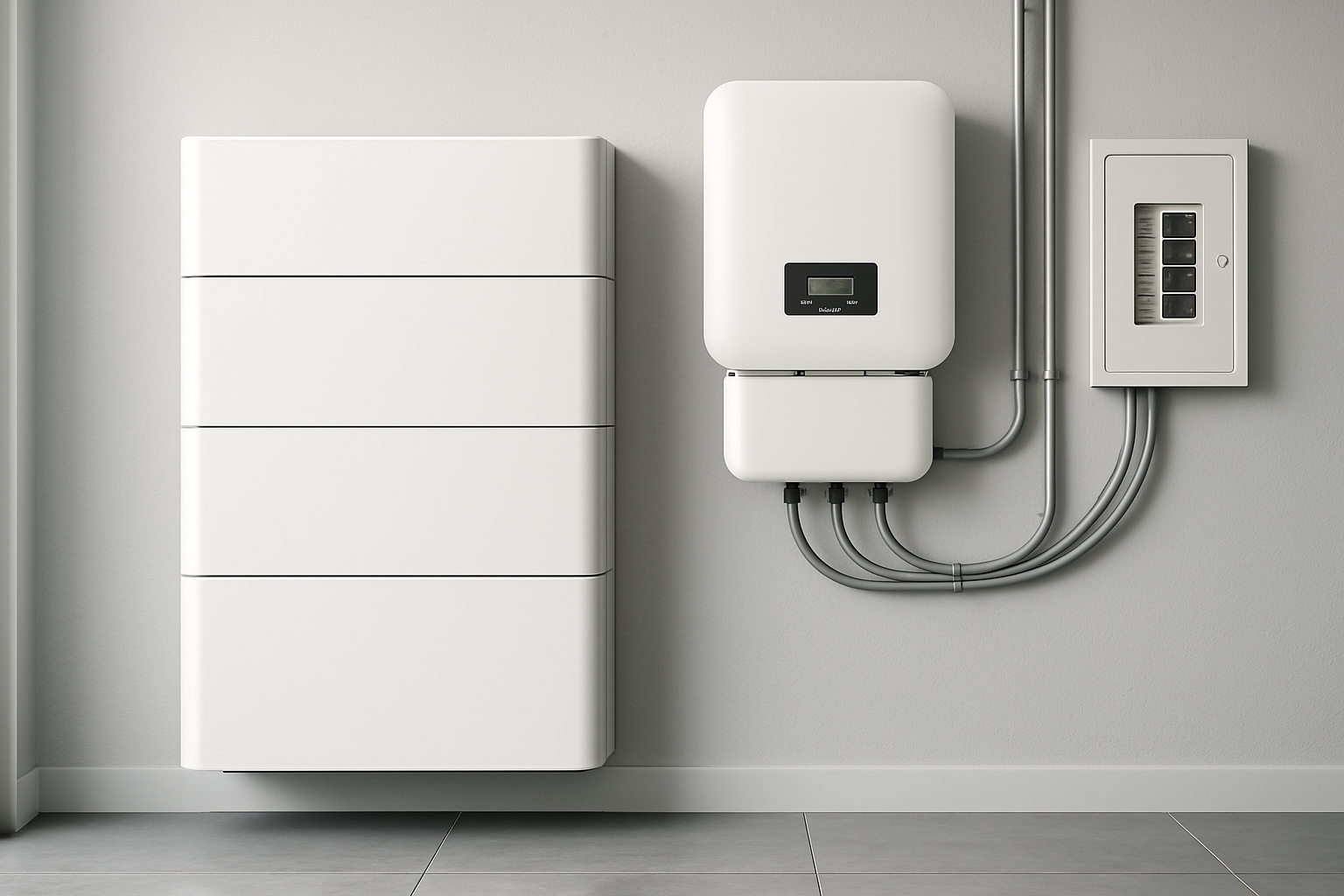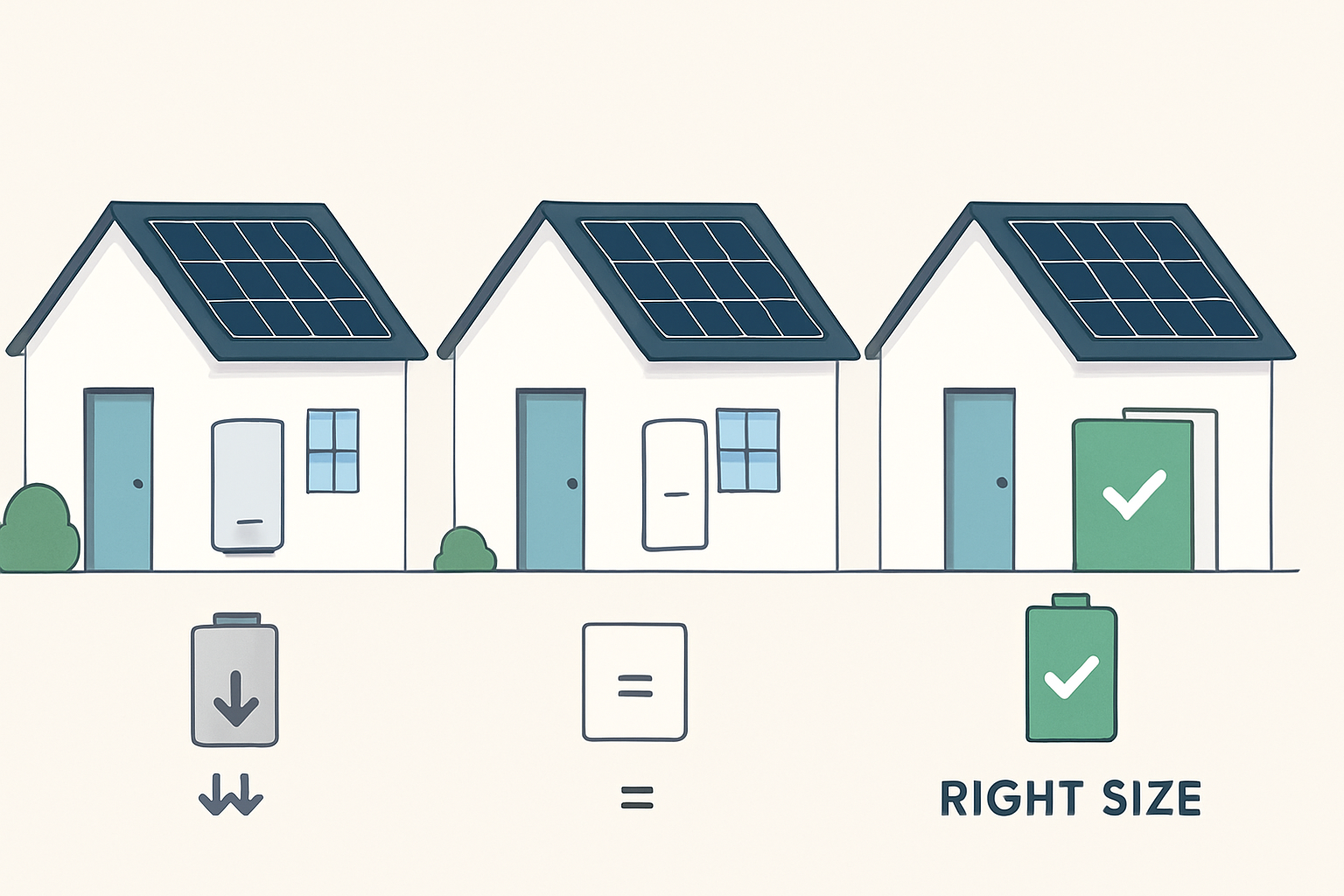Choosing the right solar battery is a pivotal step toward energy independence. The size of your battery directly impacts your system's performance, cost, and ability to provide power when you need it most. A common dilemma is whether to oversize or undersize the battery. This decision involves balancing future needs, initial investment, and long-term value. Making an informed choice ensures your energy storage system operates efficiently for years.
Understanding the Fundamentals of Solar Battery Sizing
Before comparing oversizing and undersizing, it's important to grasp the core concepts of battery sizing. The right size aligns with your energy consumption, solar panel output, and personal energy goals. Getting this wrong can mean either paying for capacity you never use or running out of power unexpectedly.
Key Metrics for Sizing Your Battery
Several key metrics determine a battery's capability. Understanding them is the first step in making an accurate assessment.
- Capacity (kWh): This is the total amount of energy a battery can store, measured in kilowatt-hours. It determines how long your battery can power your home.
- Power Rating (kW): This measures how much electricity a battery can deliver at one time, in kilowatts. A high power rating is needed to run multiple appliances simultaneously.
- Depth of Discharge (DoD): This refers to the percentage of the battery's total capacity that has been used. LiFePO4 (lithium iron phosphate) batteries can typically handle a high DoD without significant degradation.
- Cycle Life: This indicates how many times a battery can be charged and discharged before its capacity diminishes to a certain level. As detailed in a guide to solar storage performance, factors like DoD directly influence a battery's cycle life and overall longevity.
Why Accurate Sizing is Crucial for Your System's Health
Accurate solar battery sizing is not just about meeting today's needs; it's about optimizing the entire system for efficiency and financial return. A correctly sized battery ensures you maximize self-consumption of your solar energy, reducing reliance on the grid. It also prevents unnecessary strain on the battery, which can lead to a shorter lifespan. An improperly sized battery can turn a smart investment into a source of frustration.
The Case for Oversizing a Solar Battery
Oversizing means installing a battery with more capacity than your current daily energy consumption requires. This approach prioritizes energy security and prepares you for the future, though it comes with a higher initial cost.
Advantages of a Larger-Than-Needed Battery
An oversized battery offers significant peace of mind. You gain robust protection against extended power outages, ensuring your home remains powered for days instead of hours. It also future-proofs your system, readily accommodating increased energy demands from new appliances or an electric vehicle. Furthermore, by operating at a lower average Depth of Discharge, a larger battery may experience less stress, potentially extending its operational life.
Potential Downsides and Financial Considerations
The primary drawback of oversizing is the higher upfront cost. Battery technology represents a significant portion of a solar system's budget, and paying for unused capacity can extend the payback period. According to the World Energy Investment 2023 report, while costs are decreasing, storage systems are still a major investment. There is a point of diminishing returns where the added cost of extra capacity outweighs the benefits, especially if that capacity is rarely used.
The Argument for Undersizing a Solar Battery
Undersizing involves selecting a battery that meets your essential needs but may not cover your entire energy consumption. This is a strategic choice focused on maximizing return on investment and addressing specific goals like peak shaving.
Benefits of a More Conservative Approach
The most compelling reason to undersize is the lower initial investment, making solar energy storage more accessible. A smaller battery that is fully utilized each day provides a faster return on investment because none of its capacity goes to waste. This approach is ideal for homeowners whose main goal is to offset expensive peak-hour electricity rates or to have just enough backup power to keep essential appliances like refrigerators and lights running during a brief outage.
Risks and Limitations to Consider
The main risk of undersizing is a lack of sufficient power during a prolonged grid failure. If your energy needs exceed the battery's capacity, you will be left without power. This strategy also means you will export more surplus solar energy to the grid, which may be less financially beneficial depending on your utility's net metering policies. Additionally, an undersized battery may undergo deeper and more frequent charge-discharge cycles, which could accelerate its degradation over time if not managed properly.
How to Find the Right Size: A Practical Approach
Determining the perfect battery size is a balancing act. It requires a careful analysis of your energy habits, system capabilities, and long-term objectives. Using a solar battery sizing calculator can provide a good baseline, but a detailed evaluation is necessary.
Calculating Your Energy Needs
Start by examining your electricity bills for the past year to understand your average daily and seasonal energy consumption. Identify the 'essential loads'—the critical appliances and systems you want to keep running during an outage. This calculation will help you determine the minimum required capacity for your peace of mind and daily operations.
Factoring in Your Solar Array's Production
Your battery can only store the excess energy your solar panels produce. Therefore, its size should be proportional to your PV system's output. A large battery paired with a small solar array may never fully charge, especially during winter months. An interesting strategy noted by the IEA involves adjusting the inverter-to-panel ratio. The Medium-Term Renewable Energy Market Report 2016 suggests that downsizing the AC inverter capacity relative to the DC capacity of the solar panels can be a cost-effective way to increase self-consumption without investing in a larger battery.
| Feature | Oversizing | Undersizing |
|---|---|---|
| Upfront Cost | High | Low |
| Energy Security | High | Low |
| Return on Investment | Slower | Faster |
| Battery Lifespan | Potentially Longer | Potentially Shorter |
| Future-Proofing | Excellent | Limited |
| Best For | Off-grid living, long outages, future energy growth | Budget-conscious users, peak shaving, essential backup |
A Balanced Perspective
Ultimately, the choice between oversizing and undersizing a solar battery is not about right or wrong; it's about what is right for you. The ideal solution aligns with your specific energy goals, budget, and lifestyle. Oversizing offers a robust safety net and prepares you for the future, while undersizing provides a more accessible entry into energy storage with a quicker financial payback. A thorough energy audit and consultation with an expert can help you navigate these trade-offs, ensuring you invest in a system that is both reliable and scalable for your future energy journey.
Disclaimer: This article is for informational purposes only and does not constitute financial or investment advice. Consult with a qualified professional before making any decisions about your solar energy system.
Frequently Asked Questions (FAQ)
Can I add more batteries to my system later?
Yes, many modern solar energy storage systems are designed to be scalable. You can often add more battery capacity in the future. However, it is crucial to plan for this from the start by choosing a compatible hybrid inverter and battery management system. Mixing old and new batteries can sometimes present challenges, so it is best to use modules from the same manufacturer.
How does my geographic location affect battery sizing?
Your location plays a significant role. Areas with more frequent and longer power outages may justify a larger battery for enhanced energy security. Similarly, regions with fewer peak sun hours per day, especially in winter, might require a larger solar array-to-battery ratio to ensure the battery can be fully charged. As the U.S. Department of Energy highlights, resources are available to help model system needs based on location-specific data.
What is the typical lifespan of a LiFePO4 solar battery?
LiFePO4 batteries are known for their long lifespan and safety. They typically last for over 6,000 cycles and can have a lifespan of 10 to 15 years or more under normal operating conditions. Proper sizing is key to achieving this longevity. Consistently discharging the battery to a very low state can shorten its life, which is why a slightly oversized battery operating at a lower Depth of Discharge often lasts longer.





Leave a comment
All comments are moderated before being published.
This site is protected by hCaptcha and the hCaptcha Privacy Policy and Terms of Service apply.